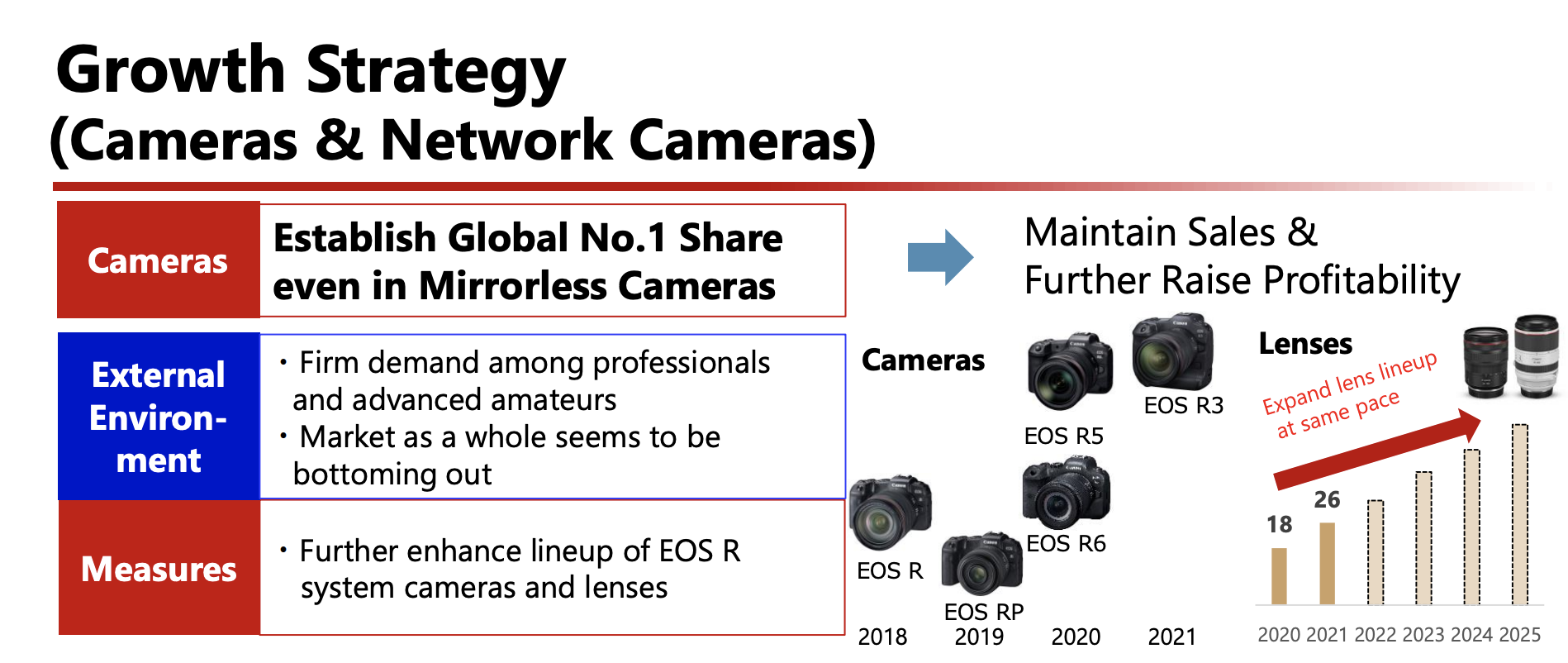Canon has revealed its business strategy plans for 2022 onwards and, for fans of the camera maker, there’s good news. Canon is keen to “establish global no.1 share even in mirrorless cameras” and will “further enhance lineup of EOS R system cameras and lenses”.
This really shouldn’t come as a big surprise – and probably wouldn’t be too hard to achieve – considering the momentum Canon has built up since the launch of the EOS R5 and EOS R6 bodies, which it soon followed up with the EOS R3 and the video-centric EOS R5 C. And there’s already quite a few new RF lenses too, including the monster RF 1200mm f/8L IS USM.
There’s been plenty of talk about a potential EOS R flagship coming this year in the form of what’s been dubbed the EOS R1, plus a possible EOS R7 that’s rumored to be an APS-C format camera with an RF mount. There’s even been chatter about the EOS RP being replaced by a refreshed (and hopefully just as affordable) model.
While Canon’s business strategy doesn’t lay any firm roadmap for developing new bodies, the company seems very keen on expanding its RF lens range “at the same pace”. To put that into firm numbers: Canon added eight new RF lenses to its stable in 2021, so we can expect another eight this year (if the camera maker manages to keep to the “same pace”), totalling 32 in four years’ time.

Analysis: focusing on the future of Canon cameras
The EOS R system isn’t Canon’s sole priority, though. There’s the Cinema line of bodies and lenses that’s also being expanded at a steady pace, plus all the concept cameras that Canon keeps experimenting with (remember the PowerShot Zoom and PowerShot Pick?).
For example, there’s the new virtual reality video system called Kokomo that Canon teased at CES 2022. According to the manufacturer, Kokomo is an “exciting new way of connecting” by allowing users to make video calls in a 3D environment. This is consumer-facing too and could find Canon some new fans.
As interesting as the concepts are, Canon’s enthusiast/prosumer cameras and lenses are stealing the show, at least according to the latest numbers coming out of Japan.
Even during the Covid-19 pandemic, Canon saw sustained growth resulting from its shift to concentrating on the mirrorless market. Despite that, the January 2022 BCN Awards (which recognizes the sales achievements of camera manufacturers each year) showed that Canon could have actually sold more DSLRs in 2021 than the previous year, which might seem rather counterintuitive but proves that DSLRs are still hanging on (which might be good news for Pentax).
As per Canon’s 2021 financial report, its interchangeable lens camera sales dropped only by 1% last year as compared to 2020, holding over half (52%) of the global ILC market, which is a pretty remarkable achievement when the world of tech was plagued by part shortages and other knock-on effects of the pandemic.
So clearly Canon is doing something right. Despite its overheating issues, the EOS R5 stole headlines, while the EOS R6 gave the average consumer a chance to purchase a remarkable full-frame mirrorless camera to match the R5’s performance. And while a high-res body to compete with the Sony A7R IV is interesting, I’m really holding out for something that sits between the EOS R5 and R6 – something with maybe 32MP sensor resolution but the same autofocus performance.
According to the same BCN Awards report mentioned above, Canon is still behind Sony in the mirrorless market, but not that far behind (28.2% versus 32% respectively). Sony, however, has an extensive range of native lenses for its full-framers. With Canon’s plans to expand its RF line “at the same pace”, the brand will be able to compete even harder with its main mirrorless rival.
So Canon’s goal to dominate the world of mirrorless cameras might be achievable if it keeps the momentum going and can keep up with demand.
- Looking to get a new camera? Take a look at our picks of the best Canon cameras available today.

















